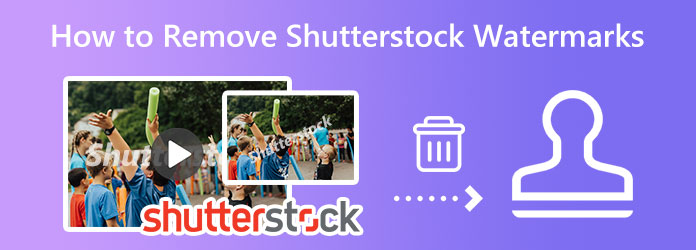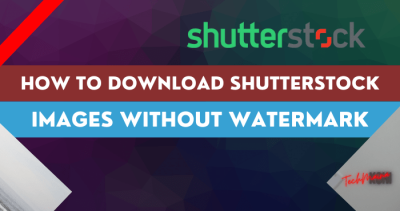If you’ve ever come across a stunning Shutterstock video but found it marked with a watermark, you might wonder how to get around it. Watermarks are there to protect the creator’s rights, but sometimes, you might need the footage for personal projects, educational purposes, or with permission. Removing watermarks can seem tempting, but it’s a tricky area that involves both technical skills and legal boundaries. In this guide, we’ll explore legitimate ways to access footage without watermarks and help you understand the risks and best practices involved in handling copyrighted content.
Understanding Copyright and Legal Considerations

Before you think about removing a watermark, it’s essential to understand that watermarks are more than just visual marks—they’re legal protections for the content creator. Copyright law grants creators exclusive rights over their work, including how it’s used, distributed, and modified. When you see a watermark on Shutterstock footage, it means the video is protected, and using it without proper licensing can lead to serious legal consequences.
Here’s what you need to keep in mind:
- Copyright infringement is illegal: Removing a watermark to use the footage without paying or obtaining permission can be considered piracy.
- Licensing is key: If you want to use a Shutterstock video legally, purchase the appropriate license. This often grants you access to the high-quality, watermark-free version.
- Fair use is complicated: In some cases, using snippets of copyrighted content might be considered fair use—like for commentary, criticism, or educational purposes—but this is a nuanced legal area and varies by jurisdiction.
- Respect the creator’s rights: Always give credit where it’s due and respect licensing agreements. This encourages creators to continue producing quality content.
So, while removing watermarks might seem like a quick fix, it’s important to weigh the legal risks. The best approach is to obtain the proper license or permission to use the footage legally. If you’re ever unsure, consulting with legal experts or the content provider can save you a lot of trouble down the line. Remember, respecting copyright not only keeps you out of legal trouble but also supports the hardworking creators behind the scenes.
Tools and Software for Watermark Removal
When it comes to removing watermarks from Shutterstock footage, there are a variety of tools and software options available — each with its own strengths and quirks. Whether you’re looking for something quick and easy or a more professional approach, there’s likely a solution that fits your needs.
Popular Tools and Software:
- Adobe After Effects: Perfect for those familiar with professional video editing. It offers powerful features like content-aware fill that can help remove watermarks with a bit of patience.
- Video Eraser & Unwatermark Apps: These are mobile apps designed specifically to erase watermarks on videos. They’re handy for quick edits on the go but might not produce perfect results.
- HitPaw Watermark Remover: An easy-to-use desktop tool that can remove watermarks from videos and images. It uses AI algorithms to help fill in the erased areas seamlessly.
- HitFilm Express: A free video editing software that offers masking and clone stamp tools which can be used to cover watermarks manually.
- Video Watermark Remove: A dedicated software that claims to remove watermarks automatically by analyzing the footage.
While some tools are free or offer trial versions, keep in mind that the quality of watermark removal can vary. For professional results, paid options with AI capabilities tend to deliver the best outcomes. Remember, always use these tools ethically and legally, respecting copyright laws and licensing agreements.
Step-by-Step Process to Remove Watermarks from Shutterstock Footage
Removing a watermark from Shutterstock footage isn’t always straightforward, especially if you’re aiming for a seamless, professional look. Here’s a simple step-by-step guide to help you navigate the process effectively.
Step 1: Select Your Tool
Choose the software that best suits your skill level and needs. For beginners, user-friendly apps like HitPaw or dedicated watermark removal software can be a good start. For more advanced editing, Adobe After Effects or HitFilm might be necessary.
Step 2: Prepare Your Footage
Import the Shutterstock video into your chosen software. Make sure your footage is in a compatible format and resolution for best results.
Step 3: Identify the Watermark Area
Play through the video and pinpoint where the watermark appears. It helps to note the timing and position so you can focus your editing efforts precisely.
Step 4: Use Masking or Cloning Tools
Depending on the software:
- Masking: Create a mask around the watermark area. This isolates the region you want to alter.
- Cloning or Content-Aware Fill: Use these features to replace the watermark with surrounding pixels, effectively “covering” it up.
Step 5: Fine-Tune the Edits
Adjust the cloned or filled areas for a seamless look. This may involve tweaking color, brightness, or blending edges to match the surrounding footage.
Step 6: Preview and Refine
Play back the edited footage to see if the watermark removal looks natural. Make additional adjustments if needed — sometimes, multiple passes are necessary for perfection.
Step 7: Export Your Video
Once satisfied, export the edited footage in your preferred format and resolution. Keep in mind that re-encoding can sometimes reduce quality, so choose your export settings carefully.
Remember, patience is key. Watermark removal can be a delicate process, especially if the watermark overlaps complex backgrounds or moving objects. Practice makes perfect, so don’t be discouraged if your first attempt isn’t flawless. With time and the right tools, you can achieve results that look professional and clean.
Tips for Ensuring Video Quality After Watermark Removal
Removing watermarks from Shutterstock footage can be tricky, especially if you want to preserve the original quality of the video. The last thing you want is a blurry, pixelated, or distorted clip that doesn’t meet your project standards. So, how do you make sure your video stays sharp and professional-looking after watermark removal? Here are some helpful tips:
Use High-Quality Source Files
If you have access to the original, high-resolution footage before the watermark was added, start with that. Higher-quality source files give you more room to work with during editing and watermark removal, resulting in a cleaner final product.
Choose the Right Editing Tools
Not all video editing software is created equal. Look for programs that offer advanced features like:
- Content-Aware Fill – to intelligently replace watermarked areas
- Frame-by-frame editing – to manually fine-tune problematic sections
- Noise reduction and sharpening filters – to enhance overall clarity
Some popular options include Adobe After Effects, DaVinci Resolve, or specialized plugins designed for watermark removal.
Apply Proper Masking and Blending Techniques
When removing watermarks, it’s crucial to carefully mask the affected areas and blend them seamlessly with the surrounding pixels. Using feathered edges and matching color tones can help hide any inconsistencies, making the removal less noticeable.
Focus on Lighting and Color Correction
After watermark removal, the video might look different in terms of brightness or color balance. Use color correction tools to match the restored areas to the rest of the footage. Adjusting contrast, saturation, and exposure can make the final video look cohesive and professional.
Test and Review Thoroughly
Once you think you’ve completed the removal process, watch your video multiple times on different screens and in various lighting conditions. Look for any artifacts, blurriness, or mismatched patches. Doing this helps you catch issues early and refine your edits for a polished result.
Alternative Ways to Obtain Shutterstock Content Legally
While watermark removal might seem like a quick fix, it’s always best to stay within legal boundaries. Using Shutterstock content without proper licensing can lead to serious legal issues, including fines or copyright claims. So, what are some legitimate ways to access Shutterstock footage? Let’s explore your options:
Subscribe to Shutterstock Directly
The most straightforward way is to purchase a subscription or individual licenses directly from Shutterstock. They offer various plans tailored to different needs, whether you need a handful of clips or a vast library. This ensures you have legal rights to use the footage in your projects without worry.
Use Shutterstock’s Free Trial
Many stock footage providers, including Shutterstock, offer free trials for new users. During the trial period, you can download and use footage legally, giving you access to high-quality clips without initial costs. Just remember to cancel if you decide not to continue with a paid plan.
Explore Public Domain and Creative Commons Resources
Some websites offer footage that’s either in the public domain or licensed under Creative Commons licenses. Examples include:
- Pixabay
- Pexels
- Videvo
Always check the license details before using the footage to ensure it’s permissible for your intended use, especially commercial projects.
Hire Professional Footage Licensing Services
If you need exclusive or highly specific footage, consider working with licensing agencies or directly contacting creators. This approach guarantees legal usage rights and often provides access to unique, high-quality content.
Create Your Own Content
Finally, if possible, produce your own videos or hire videographers. This way, you own all rights, and you can customize the footage exactly to your needs without any licensing concerns.
In summary, always prioritize legal and ethical methods to obtain footage. Respect copyright laws and support content creators by choosing licensed sources. Not only does this protect you legally, but it also encourages fair use and the continued creation of quality content.
Conclusion and Best Practices for Using Stock Footage
Utilizing stock footage can greatly enhance your projects when done responsibly and effectively. To ensure your content remains professional and legally compliant, always prioritize understanding licensing agreements and usage rights. Remember that watermarked footage is meant for preview purposes only; removing watermarks without proper authorization is both unethical and potentially illegal.
Here are some best practices to follow:
- Choose the right license: Always select a license that matches your intended use, whether it’s for commercial or personal projects.
- Download high-quality footage: Use the highest resolution available to ensure your final product looks polished.
- Keep track of licensing details: Maintain records of licenses for each clip to avoid future copyright issues.
- Respect copyright laws: Never attempt to remove watermarks or modify footage in ways that violate licensing terms.
- Use editing techniques ethically: When editing stock footage, aim for seamless integration without misrepresenting the content.
Finally, always strive to add original content or unique edits to stock footage to create a distinctive project that stands out. By adhering to these best practices, you can maximize the value of stock footage while respecting creators’ rights and maintaining your professional integrity.
Effective use of stock footage not only enhances your project’s quality but also ensures you operate within legal boundaries, fostering a trustworthy creative process.


